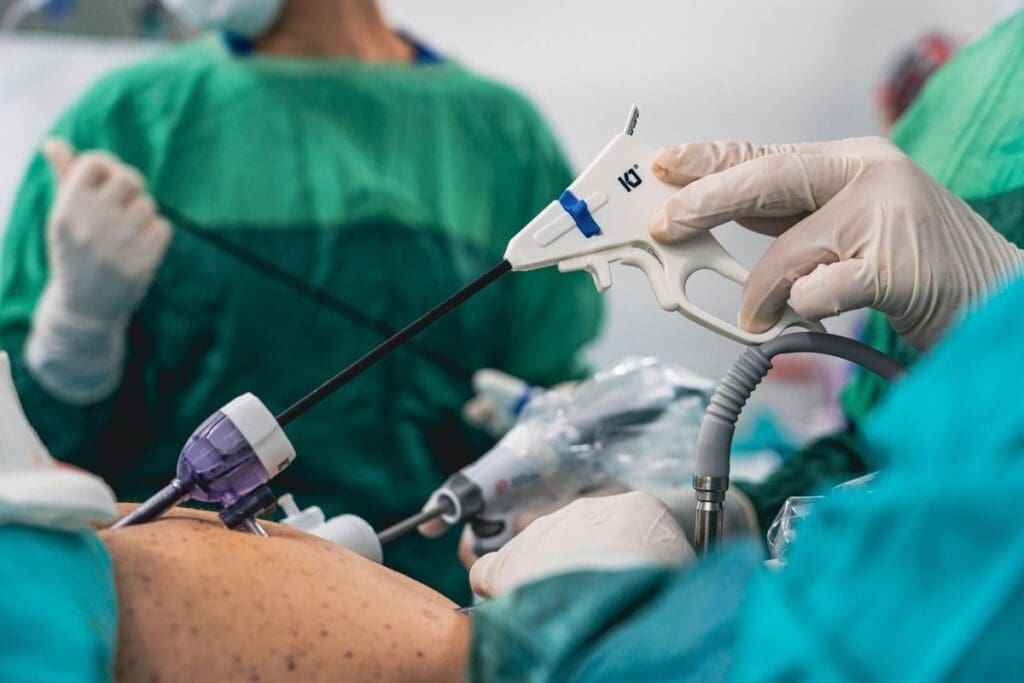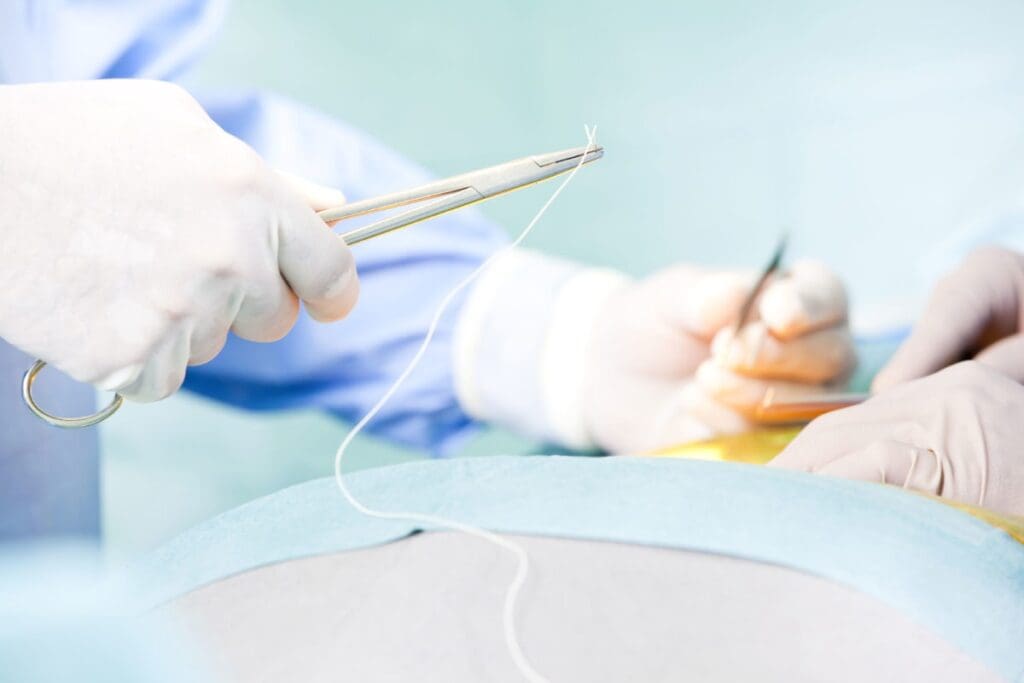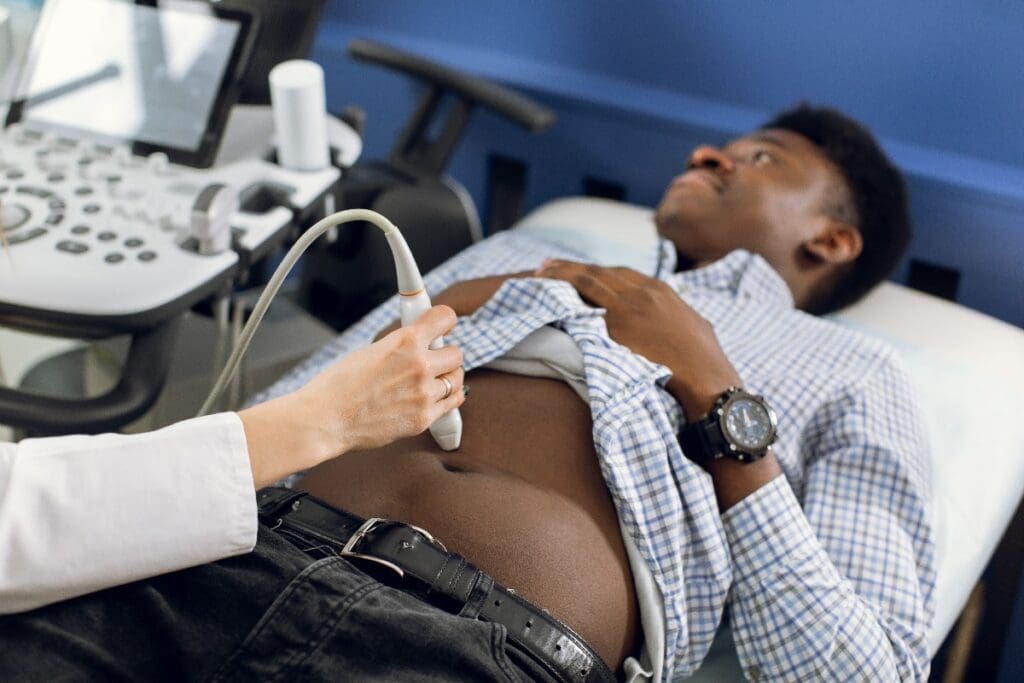Last Updated on November 24, 2025 by
As parents, Recent studies show that hernia surgery for kids is very safe. A 2024 study found that only 0.74% of kids needed another surgery after their hernia repair. Also, only 0.37% had complications.

At our institution, we focus on keeping our young patients safe and healthy. We use the newest medical methods to get the best results. Our team is ready to help with herniorrhaphy or hernioplasty. We aim to give top-notch care for stomach hernia surgery in kids.
Understanding pediatric hernias is key for your child’s health. Hernias in kids come in different types. Knowing about them helps you make better choices for your child’s care.

Pediatric hernias are mainly inguinal and umbilical. Inguinal hernias happen when part of the intestine bulges through a weak spot in the abdominal muscles. Umbilical hernias occur around the navel, often in newborns.
Inguinal hernias are common in premature babies. They often need surgery to prevent serious problems. Experts say, “Inguinal hernias in children are a significant condition that necessitates prompt evaluation and treatment to avoid serious complications.”
It’s important to know when your child might need surgery. Look for a visible bulge or swelling in the groin or navel. Also, watch for discomfort or pain, redness, tenderness, or fever, which could mean incarceration.
“Prompt surgical intervention is often necessary to prevent serious complications in children with inguinal hernias,” says a leading pediatric surgeon.
If your child shows these symptoms, see a doctor right away. They can check your child and decide if surgery is needed. This might include abdominal hernia surgery for inguinal or umbilical hernias.
Umbilical hernia repair in children is very safe, thanks to lots of research. It’s one of the top surgeries in pediatric care. Studies have shown it works well and is safe for kids.

Recent studies say hernia surgery in kids is very successful. Herniorrhaphy hernioplasty, a common method, is safe and works well. Better surgery techniques and care after surgery have made it safer.
One study found that umbilical hernia repair in kids has a complication rate under 5%. Most of these are minor issues. Another study showed that even newborns can safely get this surgery, with a low chance of serious problems.
The long-term results of umbilical hernia repair are very good. Studies say the chance of the hernia coming back is less than 1%. This success is thanks to skilled pediatric surgeons and better surgery methods.
Parents can feel confident about umbilical hernia repair. It’s a safe and effective surgery. Following the doctor’s instructions after surgery is key to the best results for your child.
Choosing between laparoscopic and open surgery for hernia repair in kids is a big decision. It affects their recovery and results. Both methods are used and have their own safety levels.
Both laparoscopic and open surgery are safe and work well. But, each method affects the child’s surgery differently.
Laparoscopic repair uses small cuts for a camera and tools. It’s minimally invasive, causing less damage. It offers:
But, it needs special training and tools. It’s very safe, with few complications like infections.
Open surgery uses a bigger cut to directly fix the hernia. It’s good for complex cases because it lets surgeons see and touch the hernia. It has:
It might mean a longer recovery because of the bigger cut. But, it’s also safe and effective for kids.
Choosing between laparoscopic and open surgery depends on many things. These include the hernia type, the child’s health, and the surgeon’s skill. We help parents choose the best option for their child.
Both methods have their role in fixing hernias in kids. Knowing their safety and benefits helps us make the best choice for each child.
Pediatric hernia surgery is usually safe, but there are risks parents should know. Knowing these risks helps parents make better choices for their child.
Minor issues after pediatric hernia surgery include wound infections, swelling, or redness. These problems are usually not serious. They can be handled with proper care after surgery.
Wound infections might need antibiotics, and swelling often goes away in a few weeks. It’s important to remember that most kids have hernia repair without major problems.
The rate of complications for pediatric hernia surgery is low, between 0.37% and 2%. This shows that most children have a smooth recovery.
Though rare, serious complications can happen. These include damage to nearby tissues or organs, hernia coming back, or bad reactions to anesthesia. Thanks to better surgery methods and skilled pediatric surgeons, these serious issues are not common.
Talking to your child’s doctor about the surgery’s risks and benefits is key. This talk can ease worries and prepare parents for what might happen.
In summary, while complications after hernia surgery can happen, they are rare. Knowing about these risks and how they are handled helps parents during this tough time.
The age and timing of hernia repair in children are key factors. Surgeons and parents must weigh these carefully for the best results. We look at the child’s health and the type of hernia when deciding when to operate.
For babies, the timing of surgery is very important. Studies show that waiting to operate can lower the risk of serious problems. This is a big decision for parents and doctors to make.
Infant hernia surgery needs a very skilled surgeon to keep risks low. Infant hernia surgery is complex and requires great care.
Important safety points for infant hernia repair include:
In some cases, newborn hernia groin or baby hernia needs quick action. But, surgery decisions are made based on each child’s needs.
By carefully planning when to repair hernias, we aim for the best results for our young patients.
After pediatric hernia surgery, the road to recovery is key. Knowing what to expect can make it easier. The recovery period needs careful attention from parents to help their child heal well.
The first 48 hours after pediatric hernia surgery are very important. Your child might feel tired or groggy from the anesthesia. It’s important to have someone with your child to watch over them and offer comfort.
Common experiences in the first 48 hours include:
To manage these symptoms, follow the pain management instructions from your child’s surgeon. This might include giving pain medication as directed and using cold compresses to reduce swelling.
The recovery timeline after pediatric hernia surgery varies. But most children follow a similar pattern.
Here’s a general outline:
Effective pain management in children is key for a comfortable recovery. Strategies include:
By understanding the recovery process and using effective pain management strategies, parents can help their child recover smoothly and comfortably after pediatric hernia surgery.
We follow strict international standards in pediatric hernia care. This ensures our young patients get the best treatment. These standards help make sure surgeries are safe and effective.
We stay up-to-date with the latest surgical techniques through ongoing education. This lets us offer our patients the most advanced treatments.
Pediatric hernia surgery has made big strides in recent years. New techniques and technology have led to these improvements. Some key advancements include:
Finding the right pediatric surgeon is key for your child’s care. Here’s what to look for:
By picking a skilled pediatric surgeon and a reputable place, you can trust your child’s care.
Thinking about your child having pediatric hernia surgery can be scary. But, the facts show that hernia repair is safe and works well for kids. It has low risks of problems or needing to do it again, so you can trust the care your child gets.
Knowing about the different hernias and when surgery might be needed helps you make good choices. Our team is dedicated to giving top-notch care to kids. We aim for the best results for safe hernia surgery.
As you plan ahead, don’t hesitate to ask questions or talk to a pediatric surgeon. With the right help, your child can heal fast and well from pediatric hernia surgery. We’re here to help you, giving all the support and care your child needs for their health and happiness.
Kids can get umbilical, inguinal, or other hernias. Knowing these types helps parents spot signs that might mean surgery is needed.
Studies show pediatric hernia surgery is very safe. The rates of complications and recurrences are low, making it a reliable option.
Look for a bulge or swelling in the belly or groin, and any pain. If you see these signs, talk to a pediatric surgeon right away.
Laparoscopic surgery uses small cuts and a camera. Open surgery has one bigger cut. Our pediatric surgeons will decide what’s best for your child.
While rare, complications can include infections or swelling. Our team will explain the risks and how we manage them.
Recovery takes a few days of rest. Most kids get back to normal in a week or two. We’ll help with a recovery plan and pain management.
For babies, when to have surgery is key. We consider their age, health, and hernia type to find the best time for surgery.
Pick a surgeon with experience in kids’ hernia surgery. Research their qualifications and ask questions to make an informed choice.
New techniques have made surgery safer and more effective for kids. Our team keeps up with these advancements to offer top care.
Watch your child closely in the first 48 hours. Manage their pain and follow our care instructions for a smooth recovery.
Wang, Z., Li, X., Wang, L., Liu, H., & Zhang, Q. (2025). Surgical methods and outcomes of inguinal hernia repair in children, adolescents, and young adults: A retrospective cohort study. Frontiers in Surgery, 12, Article 11914204. https://pmc.ncbi.nlm.nih.gov/articles/PMC11914204/
Subscribe to our e-newsletter to stay informed about the latest innovations in the world of health and exclusive offers!